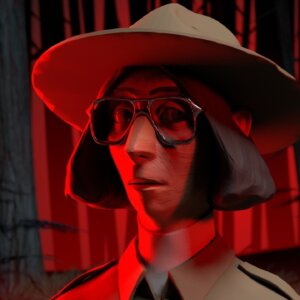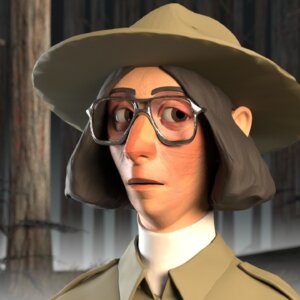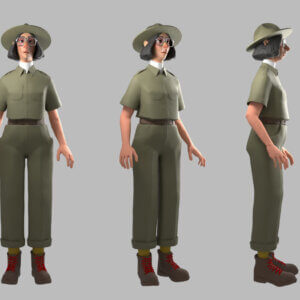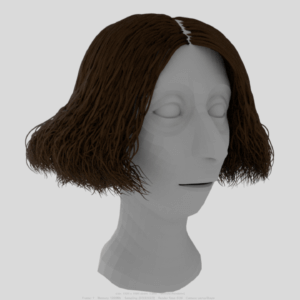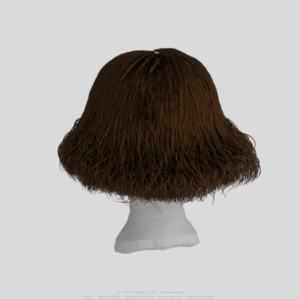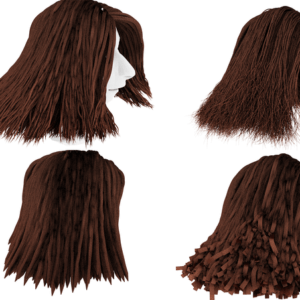Interview with Jennifer Wright (100,000 Acres of Pine)
Fresh from its inclusion at this year’s edition of the Annecy International Animated Film Festival, 100,000 Acres of Pine directed by Jennifer Wright tells the tale of a mysterious missing person with a foreboding sense of ethereal dread. The stunning tale was among the standouts of this year’s Annecy line up and I will tell anyone who asks (and even those who don’t) to give the film a well-deserved watch, preferably in a darkened room, somewhere in the countryside with only a torch to guide you.
Originally from Wales, UK, Jennifer studied for three years in Viborg, Denmark at the world-renowned Animation Workshop. Whilst honing her craft, she pitched her final year film as a dark, mysterious 3D horror in which park ranger Meghan explores her native woods to find her lost – and presumed dead – brother, using his recorded log notes to guide herself and the audience through the strange and seemingly shifting environment that claimed him. I was extremely pleased to get some time with Jennifer to talk about her film and her passion for brightly coloured 70s horror flicks, supernatural video games and the uncanny.
Could you perhaps start by telling me a little bit about you and how you came to animation in the first place?
Growing up, I was really into video games, thanks to my dad, but I never really drew at all. I was a late bloomer, it wasn’t until I was about 14, where I had this really amazing art teacher called Mr. Husband at boarding school, who just really encouraged me to be more creative. Then I just spent the age of about 14 to 18 knowing that I wanted to be in a creative industry, but I didn’t know in what way. Through artists that I was following online, I found out about a course called CSSSA, California State Summer School of the Arts, which takes place over one month in Cal Arts over the summer, where a bunch of teenagers will come together and focus on specific artistic paths. I went into the animation one because I though animation seemed kind of cool, but I didn’t know it it was what I wanted to do. After that month I came home and I was like, “animation is it“.
Mostly at that time, it was because those felt like my people, people who wanted to be incredibly creative and make a lot of stuff. But they also had this very down to earth, nerdy side. That’s kind of how I ended up here.
The film reminds me of shows like Stranger Things and podcast series such as Lime Town, as they border on sci-fi as well as horror. Could you tell talk a little bit about the inspiration behind the film and how the story was developed?
It all comes from my personal love of the uncanny and that sort of heart-pounding, sat on the edge of your seat…more mystery horror than straight-up psychological, while I still do like that. So it was short films like There’s a Man in the Woods and Winston, both from Cal Arts graduates, and then video games such as Oxenfree and Firewatch that were really, really big inspirations on the tone of what I wanted to come across. There were also movies such as The Thing and Suspiria – I had one summer where I just ended up watching a bunch of really terrible European 70s exploitation horror films. I was really interested in a lot of the visuals that they used, especially the original Suspiria from the 70s. Clearly, the neon lights and everything I was heavily inspired by, but it’s more the mystery horror that was a big inspiration to me. Oh, and there was another game called Trüberbrook. I never actually got to play it but just from the trailer alone it inspired me so much, because it was 3D but based in an actual set that they built, so they created photogrammetry for the backgrounds and then they had 3D characters that moved as if it was stop motion. I just thought that was perfect, so I tried to emulate a lot of that.
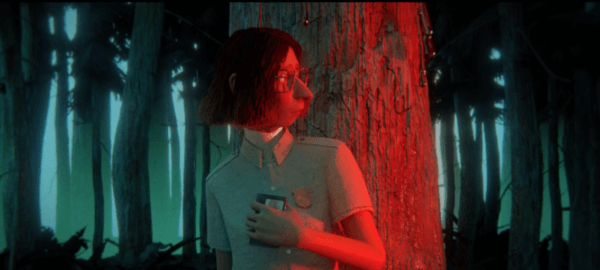
As you said, horror is a huge influence on the film. But can you talk maybe a little bit about what you think animation benefits you in creating an atmosphere and the feeling of the film in general?
I think that, with animation, the audience naturally has a larger suspension of disbelief. So, they’re open to more weird and surreal things happening. I know that in mine you can feel like the monster is actually there, because it fits in relation to the rest of what you’re seeing. Whereas when you’re watching a live-action film, if the CG doesn’t quite fit in with what’s happening around it just it sticks out and feels a bit awkward. I just feel like it’s so easy to create the uncanny and have it feel like it still fits in animation, whereas it can feel a bit goofy in live-action. An example I came up with when I was pitching the project was with the recent IT films, they were using CGI to make it uncanny and to make it fit in. So it just kind of makes sense if the whole thing is that because then you’re not watching it in relation to the live-action and you can feel the disconnect.
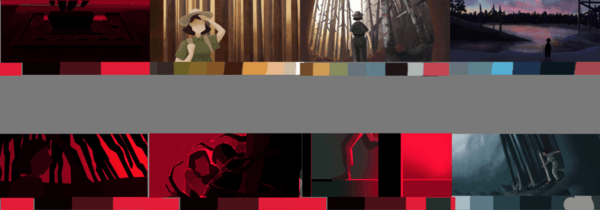
You made the film whilst at The Animation Workshop. Could you explain the development process there and what the dynamic was like?
We pitch the films at the end of our second year and then find out right before summer whether or not the film got picked – and I was very, very fortunate that mine did. So then in the third year, just the director starts off for the first one-to-three weeks working with some teachers mentoring you. You basically go over what is it you want and what story you’re hoping to tell by going over story beats, so you’re really focusing on what it was you wanted as the director before you go into creating it with the team where you’re hearing all of the feedback. Then you spend from September to January in pre-production and February to May in production. Within the dynamic of the team I had a rather large group, there were eleven of us in total; five animators and five computer graphics artists, then there was me who was also an animator. So, we had an art director, we had a technical director, a production manager, an animation lead at The Animation Workshop – they really want us to act as if we’re really working in a company and really producing this film for someone. It was just really good to have all of those other leads supporting me, so when I was having to look over everything I knew that they could just talk to someone else in the team about how something should be animated as an example, and because they would understand it, it just felt very, very professional and I was super, super happy with my team. I got very lucky.
What do you feel working in that way and with those people brought to the film as a whole?
Oh, a lot. I know that my animators brought me a lot of calm and a huge amount of structure to the story. They were very much on the story side with me and my CGs we’re focusing a lot on “Let’s get this out. Now”. All of my animators were my classmates for the past two years. So, they knew my vision because I’d been banging on about the things that I’d liked for two years at that point. It was really, really good to just have other people who understood and could help build upon the entire idea. Whereas, specifically in the CG side, my art director and my TDs made the film look so spectacular with their own ideas and references that they brought into it. While everything is still based on my original ideas, I never wanted to come into this project making it fully my own because it’s everyone’s project in the third year. I had some people who were just phenomenal, like my art director Helena Lucca, she’s an amazing modeler and character designer who really helped get Megan looking spectacular. I was just trying to play to their strengths and figure out what it was that they wanted to do and what that could add to the film, like the idea of having all the resin dripping down if we hadn’t had the technical director that we had, we definitely wouldn’t have been able to get some of those parts simulated.
The film sort of creates this illusion of a mixed media process with the staccato stop motion-style movement and the painterly texturing to the CGI characters in the world. Can you tell me a little bit about where that came from, why you chose to work in that way and how you developed the pipeline process?
My favourite medium of animation is stop-motion, but I knew that if I pitched a stop motion film at my school, no one would work on it, so I would have to make it 3D. That’s where seeing the trailer for games like Trüberbrook really blew my mind because I felt that I could make it feel like stop-motion animation and use photogrammetry for the backgrounds. Unfortunately, we didn’t end up using photogrammetry because we knew that would kill us because we didn’t have the time. I just wanted to make everything very reminiscent of stop motion, that’s why I wanted everything to feel very textural.
One thing that I kept saying is “I want you to be able to see an object and know exactly how it would feel if you ran your hand over it”. So that’s why I wanted the trees to feel as though there was a really extreme bark that was like paint peeling off, by looking at a lot and getting a lot of inspiration from set designs and miniatures – specifically I ended up watching a lot of toy train track building miniatures on YouTube – and just falling down a rabbit hole of how to make a 3D film stop motion-looking without it actually being stop motion.
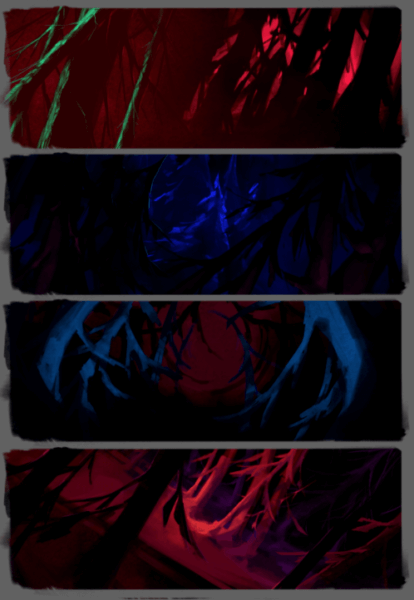
Yeah, the trees actually fooled me a bit, they were really phenomenal.
Big props to my CG team there. They were absolutely amazing. I am still absolutely thrilled with the way it’s turned out.
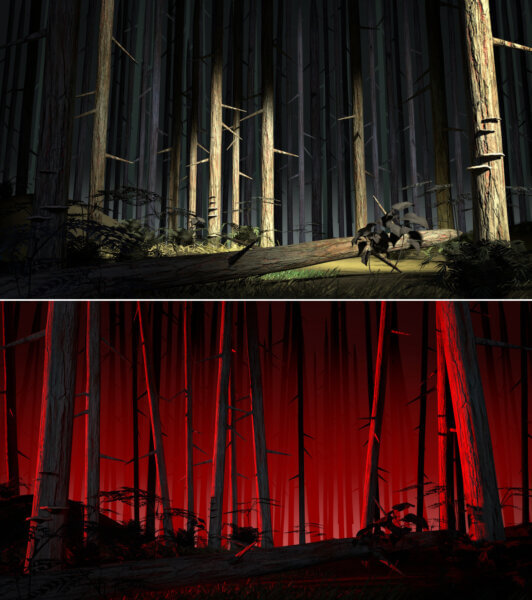
The film is really enthralling and feels like a slice of a much bigger thing. I was wondering if there had been any thoughts or discussions about perhaps doing another film or films following more of her story or expanding on other stories set in that world?
I haven’t thought exactly about making something in the same setting or with her. But I definitely, definitely want to be making things that follow in the same vein, like always having some sort of a cultural monster aspect to something. I have two ideas currently going, but if someone came to me and proposed a chance to make something more with that story, I absolutely would. But simply because it was a third-year project I sort of feel like I need to move on from it for a little while. I also feel like her story was quite clean-cut, unless we were to follow other people who went in after and before her. But no, not exactly following her story. Just the idea of there being something more in the woods, I mean, that was my entire initial idea and it’s still inspiring to me even now. Although we could make it a video game. I’ve been talking about things like that.
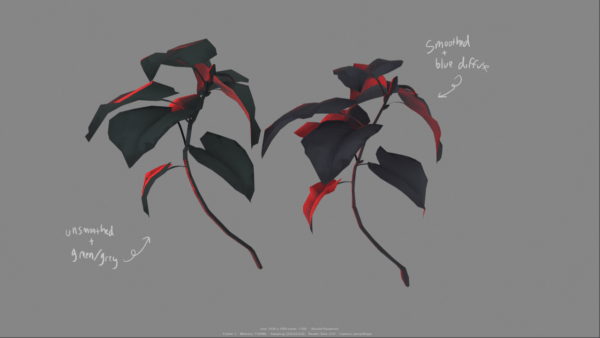
I saw the film as part of the Graduate Program at Annecy. What was it like to hear your film had got selected into Annecy? And were you able to do anything special during lockdown to celebrate the screening and its new online setting?
It was absolutely mind-blowing. That was the first selection that we received so it was kind of a shock to the system. Obviously when you find out you can’t tell anyone for the first three or four weeks, so I told my team and they had to keep it on the down-low. But also that was when COVID had just started and we’d had to enact the lockdown in Denmark, so I was actually by myself for the entire time and I wasn’t really able to do anything to celebrate other than you know, a couple of discord calls with my team just being like “Yeah, all that crying on the bathroom floor was worth it”. I then ended up getting some work and got kind of busy. So, I wasn’t really able to do anything to celebrate. It’s been more in the small things, like people reaching out to me and just sharing those wonderful comments that I get with the team. I would have liked to have celebrated, but I think that’ll be for next year. When I go to Annecy,
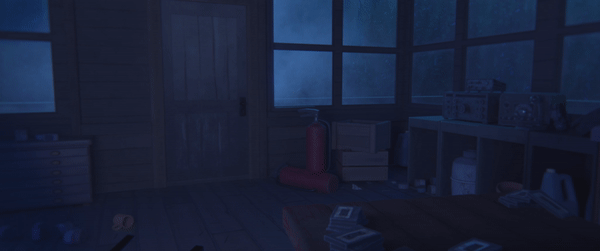
The film still has a while to go on the festival circuit, do you know where it’s going next?
It’s in a few festivals that I can’t really mention, but it’s got a while to go. It’s still getting into a couple of places and I’m hoping to get our wonderful distribution company MIYU to focus specifically on the horror festival circuit because it’s blown my mind the people that I wanted to reach with this film. It has really resonated with them. One of the artists that we even looked at for inspiration with our monster design ended up just retweeting about it and saying it was great, and Fangoria did the same. It was just the exact audience that I was aiming for that has ended up seeing it.
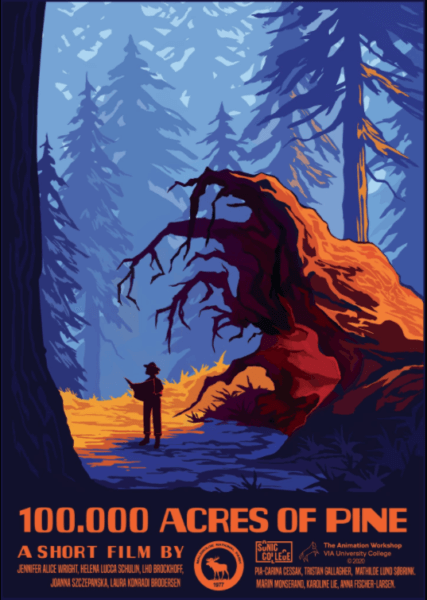
And what are you working on?
I’m currently trying to look for more freelance employment whilst working on my own portfolio, since I’m hoping to be a storyboard artist and revisionist for the next while. Just moving along in the way that 2020 requires you to do.
You can follow the progress of 100,000 Acres of Pine via the film’s Facebook page.



